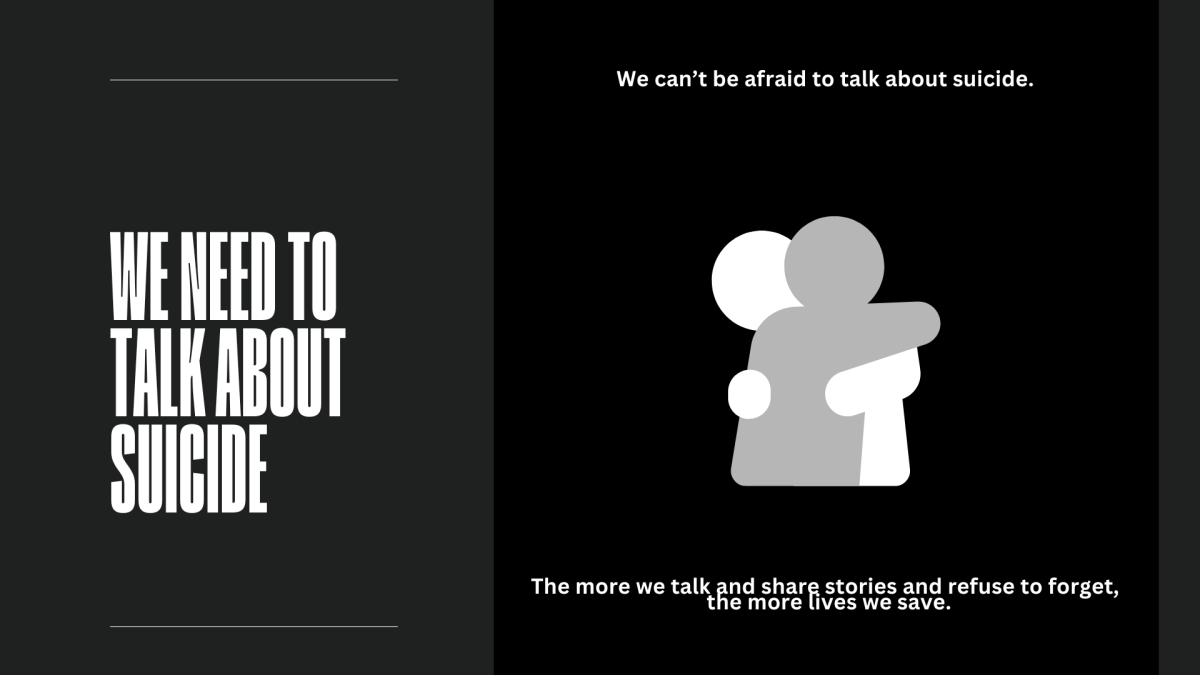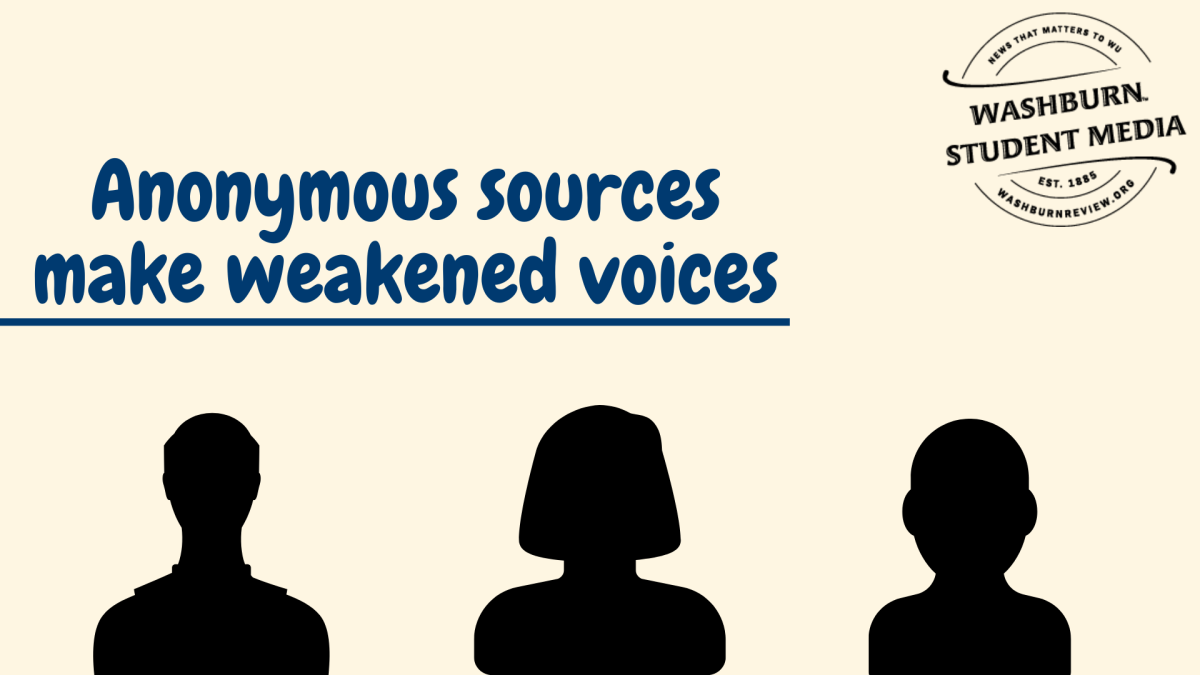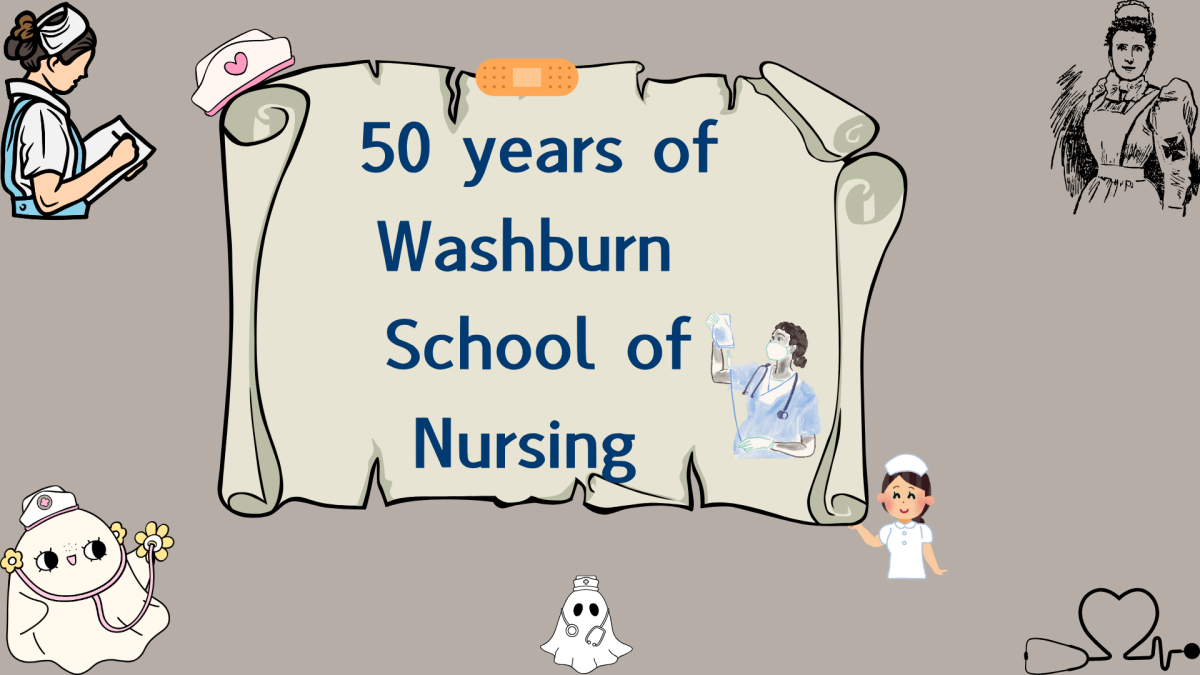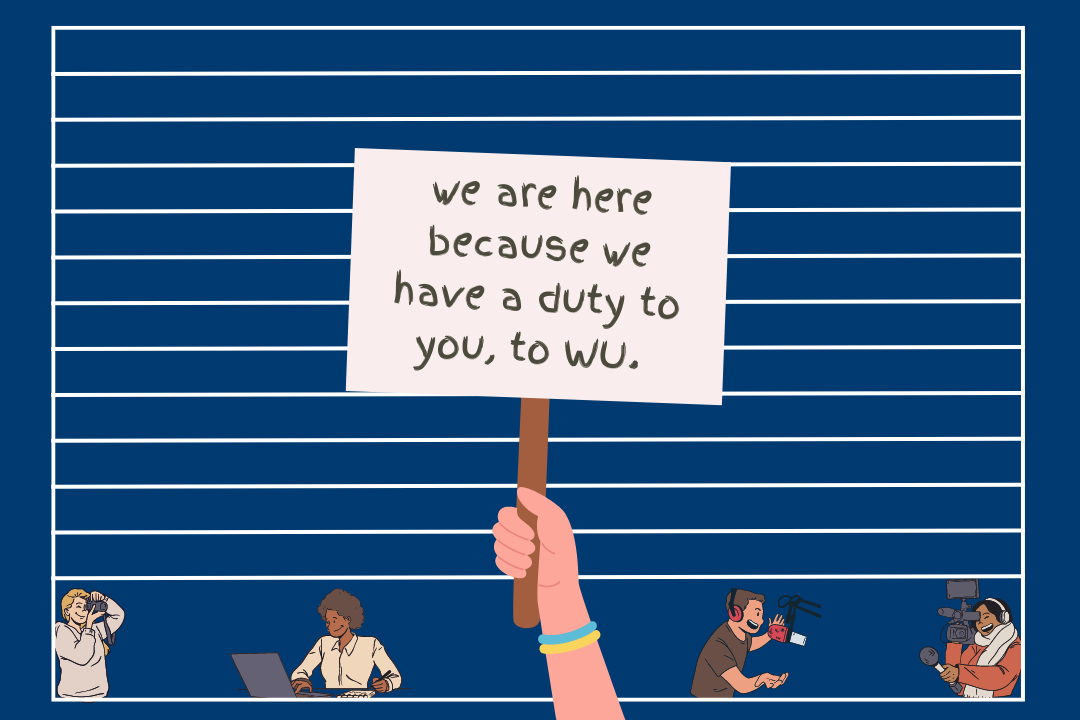Suicide has many names and many forms. When people read the word or hear it come from someone’s mouth, they almost shrink away at the idea.
This is because as a society we have made suicide a taboo subject. It’s hard to talk about and hard to write about. For some people, the word physically pains them, bringing their darkest moments to light; moments that they desperately want to forget, but should we forget?
I certainly can’t forget my own experiences with suicidal ideation, but this has given me the ability to write about suicide and help save lives. Just like many others, the idea of talking about my experiences is scary, but I find that it is more important to me to help others than to hide in the safety of my silence.
Suicide claims the lives of thousands each year, each number representing a person who took their life, believing it was the only choice they had to make their pain disappear. We cannot forget those who have died by suicide nor can we forget what drove them to commit these acts. Not talking about suicide leads many others to follow the same path.
While according to the CDC, suicide was the 11th leading cause of death with over 49,000 suicides in the United States in 2022, it is important to note that suicide is one of the most preventable causes of death. So, how do we do this?
In order to prevent suicide, people first need to know the warning signs. These can be small and unnoticeable to some, but paying close attention can help save lives.
According to the National Institute of Mental Health (NIMH), some common warning signs to be aware of include, but are not limited to:
- Self-isolation
- Increased use of drugs and/or alcohol
- Changes in online presence
- Sudden significant change in work/school performance
- Language regarding hopelessness, helplessness, death or being a burden
- Giving away important possessions
- Abrupt or dramatic change in mood
- Talking about suicide
If you notice one of these signs, reach out. Just letting someone know that you care can do wonders for them. This can take many forms such as sending a text, calling them, meeting for lunch or having a day out. Just supporting them as a peer can help them through these dark moments.
Ethan Nelson, graduate student in clinical psychology, met with me and shared his insight as both a survivor of a suicide attempt, and as a psychology student.
“It’s really good to have peer support, however, it’s really enhanced if peers have been through what you’re going through,” Nelson said. “If a friend doesn’t have experience with suicidal ideation or mental health struggles, their support is still valuable, but I would say it’s even better if they have lived that experience. That’s kind of what I would have wanted during those times.”
Reaching out to someone also includes starting a conversation. This conversation can, and will, seem scary at first, but it is still important to have. When having the conversation, avoid using triggering language or criminalizing the person. Terms such as ‘commit’ give the impression of committing a crime or committing a sin, and these connotations can make the person feel their emotions are wrong. What they are experiencing might not seem big to you, but it can be world crushing to them. It is important to validate this, not dismiss it.
Begin with words such as, ‘I can see that you’re struggling. I would love to listen and help however I can.’ This validates their feelings and shows them that you see them and want to help.
In this same conversation, encourage them to seek help. This can be through the 988 Lifeline, Crisis Text Line, a therapist, psychiatrist or even by contacting Washburn Counseling Services. The first step can be the hardest step to take, so it can be relieving if you offer to help find resources.
Seeking therapy, in my eyes, is one of the most important things someone who is struggling can seek. Even if I am no longer idealizing suicide, therapy helps me regulate my emotions and have a dedicated time where I can decompress life events. You don’t have to be suicidal or even struggle with mental health to seek a therapist, you can just seek a therapist to help manage stress or overcome difficulties in your day to day activities.
Next, help them make a safety plan. This can include who they should talk to if their thoughts escalate, a safe space to go, various coping mechanisms such as drawing on themselves, screaming into a pillow, exercising or even dragging ice across their skin. It is also important to recognize the situations and behaviors that put them at risk. Helping to minimize these situations can be vital to a safety plan. Giving encouragement is important when it comes to safety plans in the long term.
Nelson mentioned that one huge factor with coping is to not be isolated. This, however, Nelson said is easier said than done.
“When I’ve been in that place, the last thing I want to do is be around people, so a skill my therapist emphasized was opposite actions. Feeling emotions is fine, but sometimes we have to act opposite the urges that those emotions want us to do,” Nelson said.
When someone’s thoughts escalate to self-harm, it is important to help them through that moment. Self-harm can occur for a variety of reasons including, processing their feelings, distracting themselves, feeling something physical, developing a sense of control, punishing themselves for things they think they’ve done wrong or expressing their emotions that they find embarrassing.
During your conversation, ask them questions that are tough. This can be hard to ask someone you care about, but it can be even harder for them to respond. This takes patience. Ask them questions such as: ‘Do you have a plan? Are you scared to be alone right now? Are you harming yourself? Have you ever attempted before?’
However, along these lines, if you have reason to believe that this person is in immediate danger, do not wait. Someone who has a plan or is expressing thoughts about wanting to die in the near future is in immediate danger. In this situation, ensure that all means of harm are removed, or contact someone who has the ability to remove the means of harm. Do not leave the person alone, if they are in immediate danger, call 988, the national suicide and crisis lifeline. If the person is currently attempting, or has already attempted, call 911 for emergency response.
While the moments before an attempt are critical to saving lives, it is also important to care for the person in the minutes, hours, days and even years after the attempt. This can be through offering to attend appointments with them or keeping their environment safe, if they agree to your help.
After an attempt, do not treat the person any different than you would have before. It may feel different, but they are still the same person they were, even if they didn’t show you they were hurting.Try not to be discouraged if they don’t want to interact with the world in the same way as before. If big events are overwhelming to them, try to suggest smaller things such as going on a walk or watching a movie.
“In the day’s after what’s going on, I would just say reaching out [would be good], because hiding things may feel good in the moment, but will just make your crisis worse down the road,” Nelson said.
In these moments, help them establish boundaries. Everyone is different, and after an attempt they could want lots of support or just want some space. Setting boundaries can help both you and the other person know what you feel comfortable doing and discussing after the attempt. This will also manage the strong feelings and situations you might encounter.
However, try not to burden yourself too much during this process. While talking to the person who attempted is a great step forward, be careful not to take your emotions out on them, and don’t force them to talk if they haven’t processed it yet themselves. If you still want to help them, but feel as if you can’t because of your own mental health, that is okay, but they might still need you, so focus on the smaller things.
Remind them to eat and drink regularly, take care of basic hygiene necessities, go outside and sleep plenty. These smaller things apply to yourself as well. If you are struggling, it’s okay to lean on someone else for support or take a step back. Taking care of yourself doesn’t mean that you don’t care for the other person.
Another way to reduce stigmas and help others know they aren’t alone is to share personal stories. When someone going through the darkest moment of their life sees that they truly aren’t alone and there are others like them who have survived, those who contemplate suicide see that there is hope for them, just as many others had hope.
“I struggled a lot. Freshman through junior year of college, I had suicidal thoughts and had an attempt in June of 2021 and that got me into an inpatient hospitalization. [I had] a lot of pessimism about my life and about my future. A lot of hopelessness,” Nelson said. “It’s been a long journey. What’s kept me going is a lot of therapy. I wouldn’t be a clinical psychology major if I didn’t believe in the power of therapy.”
That same year in September, Nelson started to write a newsletter regarding suicide titled “Borrow My Hope”. In this newsletter, Nelson wrote about his journey and wrote to help others who struggled just like he did.
I found that newsletter myself when researching suicide, and didn’t realize that when something deeply affects you, it stays with you for so many years after. That is why I wanted to write about suicide, because I also had suicidal ideation and struggled with thoughts of self-harm when I was younger.
During COVID especially, when I was always isolated, and stuck around people I felt I couldn’t please, it seemed to me that they would have been happier if I hadn’t existed. It’s almost funny how desperately people who idealize suicide search for reasons to live. This can be through weighing the pros and cons of suicide. Nelson said that your mind can trick you into thinking that suicide will solve your problems.
“I don’t mean to be jarring, or negative to people with suicidal thoughts, but [suicide] is a lazy problem solving. You think, ‘I am suffering with all these problems or emotions’, and boom, suicide solves them,” Nelson said.
Weighing pros and cons is a coping mechanism I found that myself and many others employ while searching for reasons to live. Suicide would make problems disappear, but I wouldn’t live to graduate highschool or ever have a family of my own, I wouldn’t ever get to see the world. But what truly grounded me was knowing that no one would take care of my cat after I died. It wasn’t as if my family or friends didn’t care for me, I understood that, but it was the fact that my cat needed me that kept me here.
I was terrified of the moments after death, like so many others are. I didn’t want to die, but that seemed like the best solution at the time, which is why we need to talk about suicide. The more we talk and share stories and refuse to forget, the more lives we save.
Edited by Jayme Thompson and Morgan Albrecht

























Sam • Sep 17, 2024 at 10:11 pm
Thank you for sharing your story. This will help so many through the struggle of their own, and even other’s mental health struggles. This is what we truly need this month